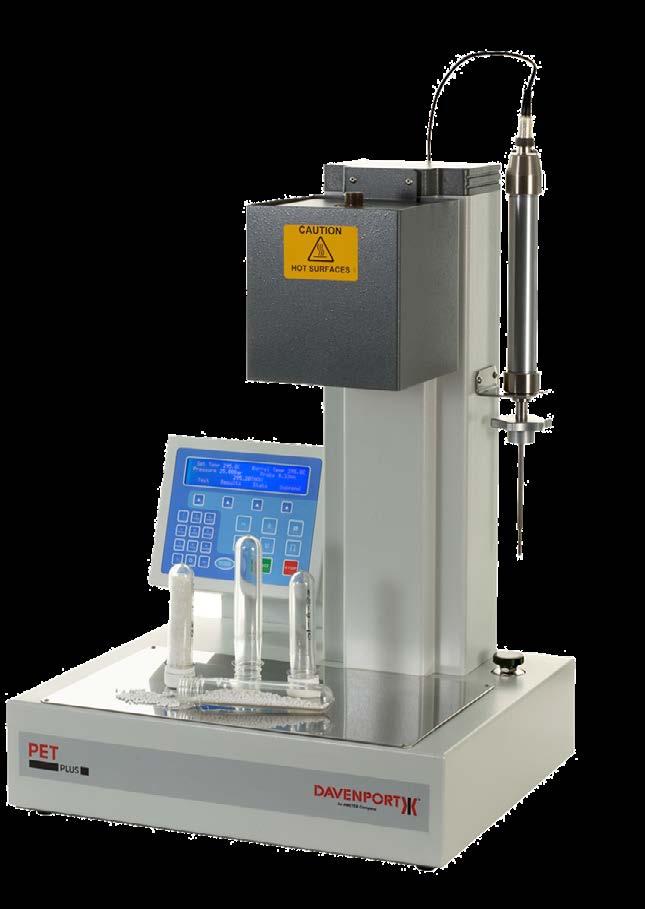
2 minute read
ADVERTISER: Bestech
Source: Bestech Australia
PET (polyethylene terephthalate) is a commercial-grade polymer that is widely used in the manufacture of packaging, fabrics, films, and moulded parts for electronics and the automotive industry.
The most important characteristic that determines the quality of PET polymer is its intrinsic viscosity (IV). IV reflects the melting point of PET polymer, its crystallinity and its tensile strength. IV is dependent on the length of the polymer chain—polymer with longer chain exhibits chain entanglement behavior, which increases its intrinsic viscosity. IV testing is important in selecting the correct grade of PET polymer for particular applications such as fibre grade, film grade or bottle grade. The testing is carried not only in the research and development stage, where new polymers and products are developed, but also across all points of the supply chain process to control product quality and optimise the operating conditions for constant production. Polymer IV can be measured by using the solvent-free approach based on the extrusion of the polymer through a die using a specific instrument. It is a powerful alternative to both solventbased techniques and the free blowing method as the halogenated solvent used for dissolution of the polymer is costly and hard to dispose. The PETPlus IV testing instrument is suitable for this application. It can test polymers at all stages of the process, such as resins, powder, dry granules, molten polymer, performs, PET bottles, film and re-grounded materials. The instrument can measure the degradation factor and provide the mean and standard deviation for each batch. Once the sample is dried, the test can be initiated and completed in less than 20 minutes. Testing the intrinsic viscosity of PET polymer is tricky as it undergoes thermal, oxidative or hydrolitic degradation during processing. The polymer degradation results in the decrease of its IV and increase the number of the carboxyl-end group. The initial degradation rate is fast due to the presence of residual water. First, different samples of molten PET are dried under vacuum. They are then placed into a sealed barrel with a die at the base and forced through the narrow calibrated die at 295°C for 17 minutes. The barrel contains a free space that is filled with nitrogen gas to ensure there is no degradation due to moisture. During this process, the LVDT probe movement against time is recorded and displayed. After extrusion, the software included with the instrument performs a linear regression to obtain the polymer degradation rate and initial melt viscosity. The system then measures the optimum flow rate and calculates intrinsic viscosity. The PETPlus -IV Test Instrument can be operated in stand-alone mode or used with the powerful data analysis software, NEXYGENPlus PET. The instrument displays trends in intrinsic viscosity measurements, thereby enabling easy comparisons between suppliers and batches with full statistical analysis and search facilities. It can also store up to 10 dry samples from the dryer for several days.
Email: enquiry@bestech.com.au GLOBAL TECHNOLOGY LOCAL SUPPORT
Dynamic & Fatigue testing system

Ergonomic, Versatile, High Performance Testing System
Testing wide range of materials:

Advanced/ Biomedical Manufacturing Assemblies Dental Implants
TMF, LCF, Fracture Mechanics, HCF, High-strain rate & Component testing www.bestech.com.au










